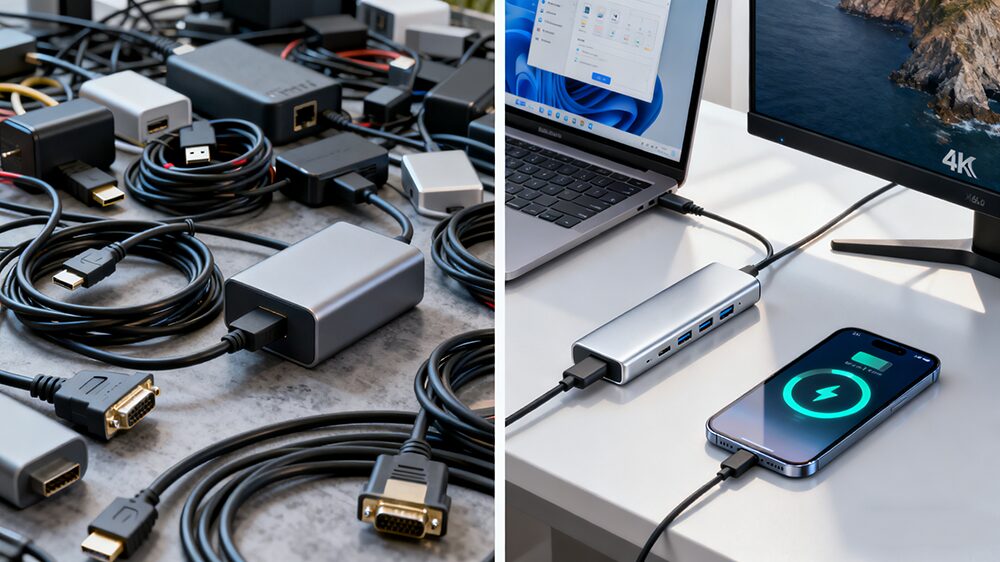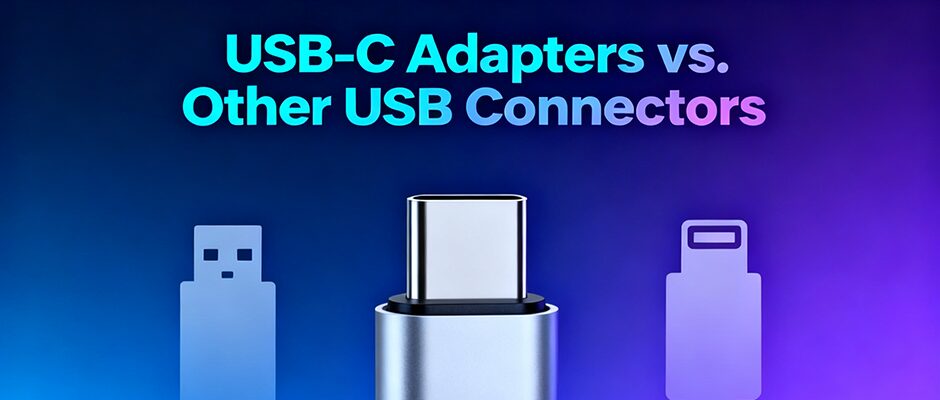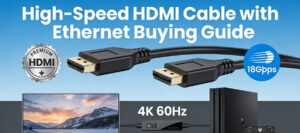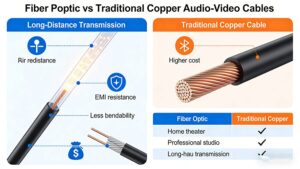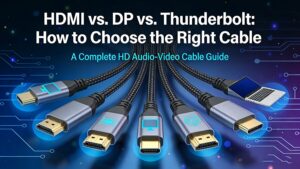Since 1996, USB (Universal Serial Bus) has evolved from clunky, one-way plugs to sleek, multifunctional ports. Today, USB-C adapters are reshaping how we connect devices—but do they make older USB types obsolete? Let’s break down the critical differences.
At a Glance: Key Specs Comparison
This table cuts through the jargon to show how USB-C adapters outperform legacy connectors:
|
Característica
|
USB-C Adapters
|
USB-A
|
Micro-USB
|
Lightning (Apple)
|
|
Plug Design
|
Oval, reversible
|
Rectangular, one-way
|
Trapezoidal, one-way
|
Flat, reversible
|
|
Velocidad de datos
|
Up to 40Gbps (USB4)
|
Up to 10Gbps (USB 3.2)
|
Up to 480Mbps (USB 2.0)
|
Up to 480Mbps (USB 2.0)
|
|
Charging Power
|
Up to 240W (USB PD 3.1)
|
Up to 15W
|
Up to 10W
|
Up to 30W
|
|
Key Perks
|
4K video + charging + data (one cable)
|
Universal legacy support
|
Cheap, durable for IoT
|
Apple ecosystem lock-in
|
|
2025 Market Share
|
98% (new devices)
|
45% (legacy gear)
|
20% (low-end devices)
|
Declining (EU mandate)
|
USB-C Adapters: The Game-Changers
- Charge your MacBook (100W)
- Connect a 4K monitor (via DisplayPort Alt Mode)
- Transfer photos from a USB-A camera
When to Stick With Legacy Connectors
- USB-A: Ideal for older desktops, printers, or budget chargers (still 45% of legacy devices).
- Micro-USB: Common in IoT gear (smart cameras, Bluetooth speakers) due to low cost.
- Lightning: Required for pre-2023 iPhones—but Apple now uses USB-C (thanks to EU rules).
The Bottom Line: Invest in USB-C Adapters
- Reduce clutter: Ditch 5+ cables for one.
- Save money: Avoid buying new chargers for every device.
- Stay compatible: Use USB-C hubs to connect old USB-A/Micro-USB gear.
